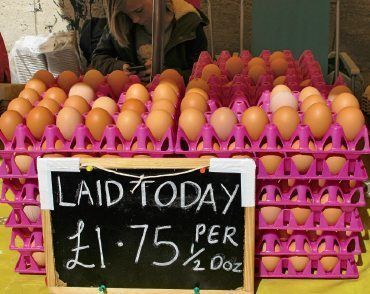
Welcome to Stroud: Notting Hill with Wellies
In between handing out samples of pure apple juice and perry, Dave Kaspar tells me how perry pears became characteristic of the Gloucestershire countryside because retiring soldiers from the Roman military base of Glevum (Gloucester) planted farmsteads with the fruit. Alongside old and unusual varieties of pear and plum, he and partner Helen Brent-Smith grow more than 200 varieties of apples at Day’s Cottage orchards, including 105 indigenous to Gloucestershire. Pomology is not his only passion, however; in another breath Dave is feeding visitors with information on the annual tradition of cheese rolling down Cooper’s Hill, literary trails and other local sights to explore.
CoventGardenoftheCotswolds_Feature CoventGardenoftheCotswolds_img1 CoventGardenoftheCotswolds_img2


[caption id="CoventGardenoftheCotswolds_img3" align="alignleft" width="370"]

Siân Ellis
Welcome to Stroud Farmers’ Market, where every Saturday from 9 a.m. to 2 p.m. amid the bunting of Cornhill Market Place in the pedestrianized heart of town you can savor local flavors on the stalls of 50–60 producers, discover the heritage of their wares, and pick up all sorts of insider knowledge on what to see and do around the area. Visitors to the Cotswolds often overlook the old mill town of Stroud, equidistant from the honeypots of Cirencester and Cheltenham, but there’s plenty to fill a day alongside the market, and it’s just 90 minutes by train from London.
The modern idea for farmers and small-scale producers to get together and sell their goods direct to the public got going in the UK with the first farmers’ market in Bath in 1997. Cutting out the middleman was a fightback against supermarket control of prices and our palates, and today there are some 750 farmers’ markets around the country turning over £4 billion a year. But they’re about more than the authentic and the artisan, the organic and ethically produced; with their festive atmosphere and gossipy meeting of old friends, they carry on the spirit of medieval markets and fairs passed down in our DNA.

Siân Ellis
Like many farmers’ markets, Stroud is certified by the National Farmers’ Retail and Markets Association (FARMA), whose criteria mean produce is grown/made by those who sell it. At Stroud produce mostly comes from within a 30-mile radius and while you pay a little more than supermarket prices, you know the goodies are local and top quality—most stalls provide tempting nibbles and tipples to try before you buy.
[caption id="" align="alignleft" width="380"]

Siân Ellis
Across the way from Day’s Cottage stall, Duncan Paget stands half hidden behind a vivid cascade of sweet-tasting carrots fresh from his cousins’ family farm in Bromham, a Wiltshire market gardening village renowned for its sandy soils and early season vegetables. “The farmers’ market is a social event; it’s what the community is about,” said Paget. On cue, regular customer (and BBC TV foodie personality), Matthew Fort pitches up for a chinwag and to buy some veg.
Elsewhere, Mike Vaughan leans on the counter of Jess’s Ladies organic farm milk and chats about the challenges of farming. Rory Gaunt at Godsell’s Artisan Cheeses explains how Single Gloucester cheese can only be made in Gloucestershire. Marc Birch of Plenty! (purveyors of delectable pies) reveals the Victorian recipe of lamb, apple, leek, prune and spices behind Gloucestershire squab pie. Keith Willingale of Bow-in-the-Cloud Vineyard (in the delightfully named Wiltshire hamlet of Noah’s Ark) extols the virtues of England’s climate and soil for dry white wines and bubbly—and tips the wink to U.S. visitors over a little-known Washington family mural monument in the parish church of Garsdon near Malmesbury.
[caption id="CoventGardenoftheCotswolds_img10" align="aligncenter" width="680"]
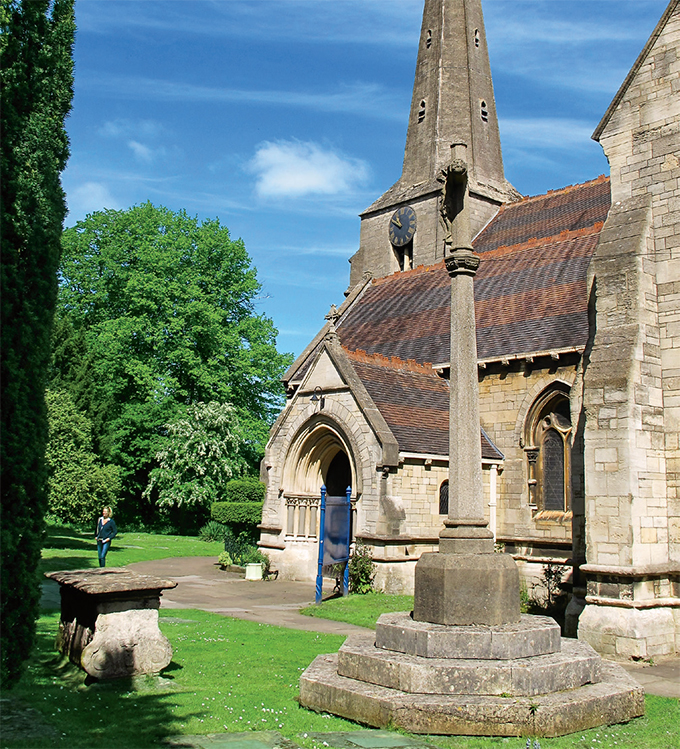
Siân Ellis
It’s a good idea to arrive at the market early (strawberries vanished by mid morning when I visited) and then explore town afterwards. Tumbling away from the market place, I found a sunny hubbub of busking musicians and café culture—Woodruffs on the High Street was Britain’s first totally organic café. Independent shops are an eclectic mix from Made in Stroud crafts to vintage clothes and Fortune Faeries offering feng shui frogs.
[caption id="" align="aligncenter" width="500"]
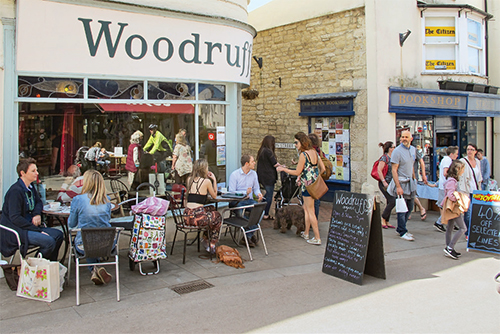
Siân Ellis
Time was, Stroud had gotten rather down at heel; nowadays it quivers with bohemian cool, claiming more artists per capita than anywhere else in the country. With a heritage rooted in the Arts & Crafts Movement and an array of present-day festivals, who can gainsay? The farmers’ market has made no little contribution in helping to regenerate the heart of town and not for nothing is Stroud known as Notting Hill with Wellies.
Pick up a History Board Trail map from the Tourist Information Centre in the 19th-century Subscription Rooms, George Street, and have a bumble around some of the town’s creamy Cotswold stone landmarks: they’re all walkable. Past the atmospheric Shambles (market on Fridays/Saturdays) is St. Laurence’s Church, for example, the resting-place of Lieutenant Joseph Delmont, the last man to die in a duel in Britain (1807). It’s a peaceful spot from which to enjoy views of the hills that surround Stroud.
The 18th-century heyday of the cloth mills of Stroud and its five valleys radiating out into the countryside, and the poetry of its famous son, Laurie Lee, have been highlighted previously (British Heritage, July 2014). Several mills may be toured (www.stroud-textile.org.uk), or wander five minutes down to the canal visitor center at Wallbridge Lock on the edge of town, for the story of the Cotswold Canals that served the mills, and progress on making them navigable again.
[caption id="" align="alignleft" width="374"]
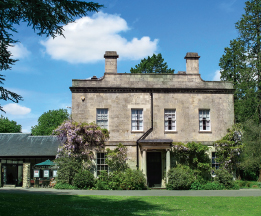
Siân Ellis
Ten minutes’ walk away is the Museum in the Park in a 17th-century wool merchant’s mansion: a fascinating delve into local history, from dinosaur bones to Roman artifacts, brewing and cloth making. Enjoy an afternoon coffee and cake in the café, or a picnic in the lovely 56-acre park; you’ll surely have picked up something scrumptious from the farmers’ market.
FARM TO FORK STROUD
Stroud is circa 90 minutes by train from London Paddington. By road it’s just about 100 miles, taking the M4 to junction 15, then A419 (via Cirencester). For travel and accommodation ideas see www.visitthecotswolds.org.uk. The farmers’ market, on Cornhill Market Place and surrounding streets, is Saturdays 9 a.m.–2 p.m.
Other farmers’ markets to dip into include:
BATH
Around 35 traders gather beneath the vaulted glass roof of the former Victorian station in the heart of Bath for the UK’s oldest farmers’ market. Look out for award-winning organic cheeses like Wyfe of Bath Cheese, as well as cider. Green Park Station, Saturdays 9 a.m.–1:30 p.m. www.bathfarmersmarket.co.uk
EDINBURGH
Stalls beneath Edinburgh Castle make for a scenic browse. Expect Scottish venison, heather honey, fine single malts and occasionally Shetland knitwear among 50-plus producers. Castle Terrace, Saturdays 9 a.m.–2 p.m. www.edinburghfarmersmarket.co.uk
LONDON
You’ve more than 20 farmers’ markets to choose from. Maybe pick up a bite for lunch from South Kensington’s market, close to the Science Museum (Tuesdays, 9 a.m.—2 p.m.), or Pimlico Road after shopping around fashionable Sloane Square (Saturdays, 9 a.m.-1 p.m.). www.lfm.org.uk
Find if there’s a National Farmers’ Retail and Markets Association (FARMA) certified market on your travels at www.farma.org.uk.
[caption id="CoventGardenoftheCotswolds_img11" align="aligncenter" width="1024"]

Siân Ellis





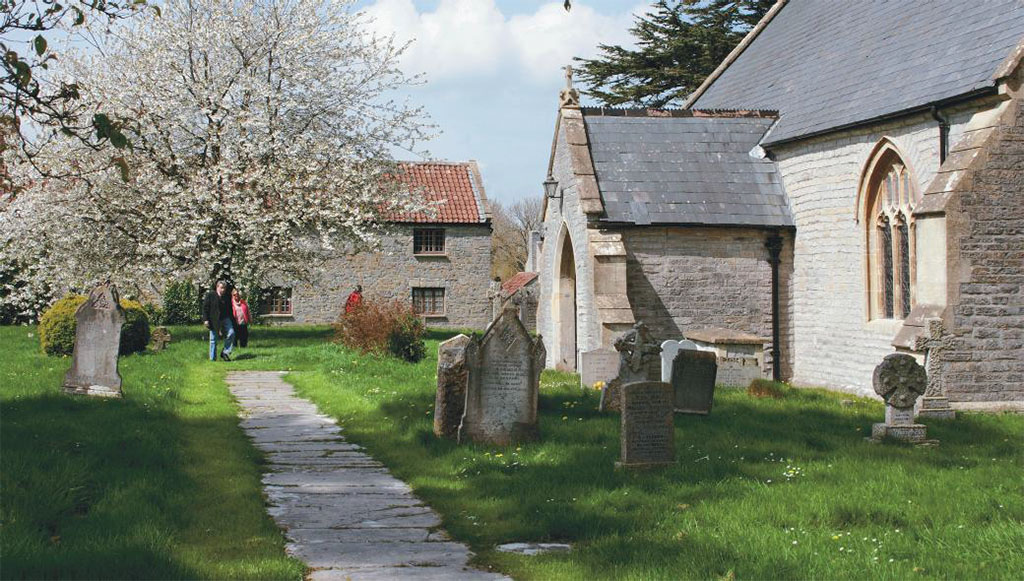
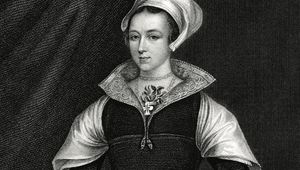

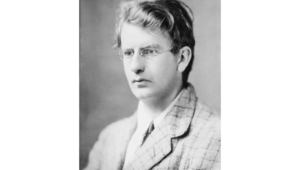
Comments